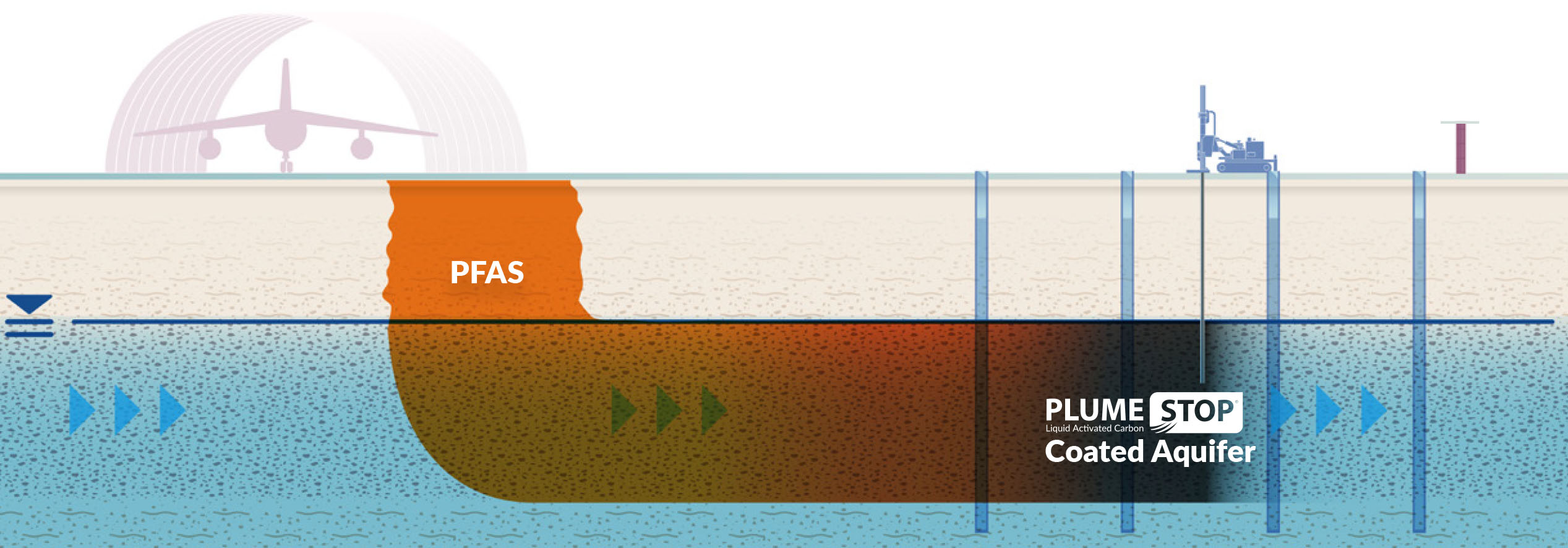Just How PFAS Treatment Makes Certain Clean and Lasting Water
The presence of PFAS, commonly known as "forever chemicals," poses considerable difficulties to water top quality and public wellness. The ramifications of these therapies prolong past instant health and wellness benefits; they raise crucial questions about lasting water monitoring approaches that have to be resolved to make sure a durable future.

Comprehending PFAS Contamination
PFAS, or per- and polyfluoroalkyl materials, have actually arised as a significant environmental problem due to their extensive frequency and perseverance in the setting. These synthetic chemicals have been utilized in various industrial applications and customer products, consisting of non-stick cooking equipment, waterproof garments, and food product packaging, due to their distinct properties such as water and oil resistance.
The contamination of dirt and water sources by PFAS happens mostly via commercial discharges, firefighting foam use, and seeping from landfills. pfas management. As soon as launched, these substances are immune to deterioration, leading to their buildup in the atmosphere. This persistence elevates vital issues, as PFAS can take a trip fars away with groundwater and surface area water systems, affecting drinking water materials and environments

Wellness Threats of PFAS
The perseverance of PFAS in the atmosphere increases significant wellness worries for individuals exposed to these materials. Research study has connected PFAS exposure to various negative health results, including immune system disorder, liver damage, and increased danger of certain cancers cells.
The ubiquity of PFAS in customer products, such as non-stick cookware, water-repellent materials, and food packaging, more enhances the threat of exposure. Consuming water contaminated with PFAS is a considerable concern, as these chemicals can seep into groundwater resources. Vulnerable populaces, consisting of kids and those living near industrial sites, might face elevated threats because of their creating systems and potential for greater direct exposure levels.
As understanding of these wellness risks proceeds to grow, governing agencies are beginning to develop standards for PFAS levels in alcohol consumption water. Public wellness campaigns are vital to mitigate exposure and protect communities from the long-term impacts of these harmful compounds.

Ingenious Therapy Technologies
How can we efficiently take on the challenges positioned by PFAS contamination in water resources? Cutting-edge therapy technologies are becoming important solutions in the quest for tidy water. These methods concentrate on the elimination or devastation of per- and polyfluoroalkyl materials (PFAS), which are infamous for their persistence in the setting.
One appealing approach is adsorption utilizing innovative materials, such as turned on carbon and ion click this site exchange resins. These materials have revealed efficacy in recording PFAS molecules from water. One more significant innovation is membrane layer filtration, which utilizes nanofiltration and turn around osmosis to different pollutants at the molecular degree, thus offering an here obstacle versus PFAS.
Additionally, advanced oxidation processes (AOPs) use solid oxidants to break down PFAS substances right into safe byproducts. This method is especially reliable for dealing with very contaminated water sources. Bioremediation methods, utilizing details microbes, are also being explored to break down PFAS.
As study proceeds, crossbreed systems that incorporate multiple innovations may use improved efficiency, resolving the intricacies of PFAS contamination. The development and implementation of these innovative treatment technologies are necessary actions toward guaranteeing the safety and sustainability of our water resources.
Benefits of Effective PFAS Treatment
Successfully treating PFAS contamination in water resources dramatically boosts public health and wellness and environmental safety and security. PFAS, commonly referred to as "forever chemicals," are immune to deterioration and can accumulate in the body, causing major wellness dangers such as cancer, liver damages, and immune system disorder. By carrying out effective therapy approaches, areas can decrease direct exposure to these damaging substances, inevitably enhancing the health results of their populations.
In addition, successful PFAS therapy contributes to the conservation of local communities. Infected water can negatively affect marine life and interrupt the fragile balance of neighborhood habitats. By making certain clean water, therapy processes shield biodiversity and maintain eco-friendly integrity.
Furthermore, reliable PFAS remediation can promote public confidence in water high quality. When areas are assured that their alcohol consumption water is free from dangerous contaminants, it promotes a feeling of safety and wellness. This trust is necessary for area engagement and support for recurring water management efforts.
Future of Water Sustainability
In the middle of expanding issues regarding water top quality and deficiency, the future of water sustainability depends upon innovative methods and collective initiatives. As areas encounter the impending threats of contaminants like PFAS, the development of advanced treatment modern technologies is vital. These modern technologies not just concentrate on the elimination of unsafe substances but also advertise the reuse and recycling of water, thereby reducing overall demand.
Moreover, effective water administration plays an essential role in guaranteeing sustainable practices. Policymakers must incorporate clinical study with regulative frameworks to establish clear standards for water use and therapy. Stakeholder interaction, including local communities and sectors, weblink cultivates a feeling of shared responsibility and urges lasting methods across numerous fields.
Financial investment in facilities is also critical; updating aging systems to include modern-day purification and filtration methods can significantly boost water high quality. Additionally, embracing environment-friendly innovations, such as natural purification systems, can supply green services.
Inevitably, the future of water sustainability hinges on a holistic technique that combines modern technology, policy, and area involvement. By focusing on these elements, we can secure our water sources for generations to find, making certain clean and lasting water for all.
Conclusion
In final thought, the reliable therapy of PFAS is crucial for ensuring clean and sustainable water. Ultimately, robust PFAS therapy methods add to lasting strength in water administration, fostering public depend on in water top quality and promoting sustainable practices.